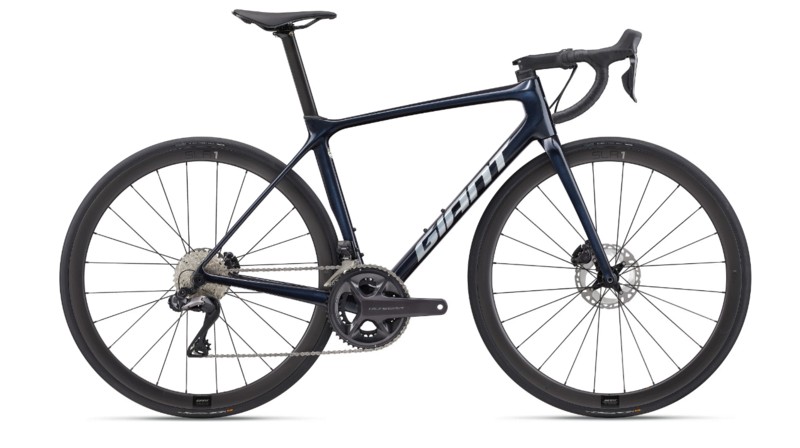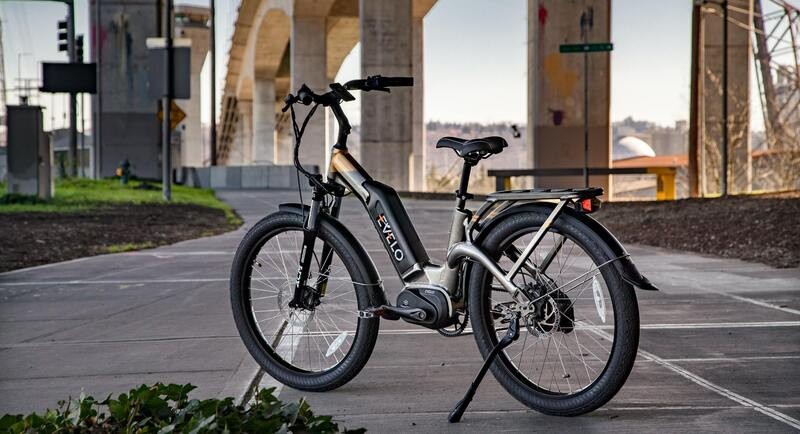Do you think the bike weight is hampering a good ride or restricting you? Well, you are not alone. Many people dream of buying the lightest bike. After all, the lightweight will ensure a good time.
Biking can be a great activity for fun and well-being. You can enjoy it best when you have purchased the right bike. But have you noticed yourself feeling depressed about the bike’s weight?
When you wish to improve the riding experience, then weight becomes a major factor. You will feel this every time you pick up your bike for a ride. So, knowing how much a bike weighs and which one will be the best for your needs will surely help.
No doubt there are ways to spend money on the new components that will help save more weight, but why not consider the average weight in advance and purchase the right bike?
If you, too, are wondering how much an average bike should weigh, then the guide here will help clear your doubt. Make sure you read ahead to get all insights about the bike weight and the factors that can impact the same.
Impact of Body Weight on Bike Weight
Have you ever noticed as a cyclist that your body weight to the bike weight ratio can directly impact the bike’s performance? Now basically there are three different weights contributing to the overall weight.
This includes the body weight of the rider, the actual weight of the bike, and the weight of any external accessories used. Hence the total bicycle weight will influence the amount of energy that will be required for riding the bike at a certain speed.
It is vital to note that the accessories added to the bike can add extra weight to it and thus affect its efficiency. So, to enjoy a faster and better biking experience, you must be aware of the heaviest parts and try to upgrade them with the better ones.
How Knowing Your Bicycle’s Weight Can Help You Ride Smarter
When riding a bike, you might not give importance to the weight but remember that the weight is crucial. Initially, all road bikes were heavy, but bike manufacturers are developing durable and lightweight bikes now. Therefore today’s, most typical road bike parts are made of titanium or aluminum. This influences the road bike’s weight.
Some components are also made up of carbon fiber technology to reduce their weight. If you look online to find road bikes, you can find the options available which will weigh less than 14.0 pounds. You will see that the handle, seat post, and even the bike frames are all made up of carbon fiber.
This ensures the weight of a road bike will be lighter. Irrespective of the rider’s weight, choosing a lightweight upright bike option will make a major difference. They are not only comfortable but work their best to have fun. In fact, when you are hoping to lose weight, considering lightweight bikes will be helpful.
But it also comes with a drawback. The lighter-weight bikes will be more expensive than the average road bike. Think about these factors when buying a bike based on your goals.
Learn How to Determine Your Bike’s Weight for Optimal Riding Performance
The information discussed above must have made you curious about calculating your bike’s weight. However, keep in mind that the weight of mountain bikes and regular road bikes will differ greatly. The best part is you can know the average weight of your road bike.
For this, you will have to weigh yourself first and note it down. Now carry the bike and weigh yourself again. Then, go ahead and subtract your weight from the total weight you calculated while sitting on the bike. Using this method, you can determine the correct weight of the bike easily.
Consider collecting more information about different bike makers, depending on the type of bike you’re interested in. It will be helpful for you to understand the bike frames, front and rear suspension, lighter frame size, and many other aspects that will help you make a purchase of the right bike easy.
How Bike Weight Can be Impacted by Considering Various Factors
Whether you are hoping to buy a road bike or a mountain bike, it is important to know the weight in advance to make the right decision. Here are the factors that affect the bike’s weight.
1. Body weight of the rider
Before you search for road bikes or mountain bikes, you must know your weight first. After all, it is a crucial factor that can directly impact your riding experience. When you are skinny, purchasing a heavier bike will be beneficial. It will keep you more balanced.
In contrast, if you are heavy, then looking for lighter bikes will be helpful. This will prevent gravity from pulling you down the road. The light bike will even allow you to accelerate better on higher slopes.
2. Accessories used when riding
The accessories you use when biking can have a major impact on your weight. Heavy loads can make it difficult for you to accelerate on the slopes.
The use of a lightweight bike is something you should seriously consider if you use a lot of accessories like helmets, suspensions, and brakes that can add weight to the bike.
3. Wheel weight
Some bikers, in the hope of improving their performance, customize their bicycle wheels. No doubt customized wheels help improve the overall structure of the bike but remember, the large tires will add more weight to the bicycle.
It will be easier for you to ride on flat terrain, but when you go up a hill, you will require a lot of hard work.
4. Material used
The material used to manufacture traditional bikes also impacts the final weight. There are now heavy-duty materials that will provide more weight to the product. But some keep it to a minimum. For instance, the material used for electric bikes is lightweight.
Listed below are some of the most commonly used items.
Carbon fiber: It is known to be quite a strong material that is used for bike frames. It is bendable and lightweight, which makes it highly powerful and durable for carbon road bike making.
Carbon steel: It is a lot more common material used for steel road bike manufacturing. Although it is very cheap, the strength of the material makes it a popular option. Carbon steel is widely used for making bike accessories that can last longer than other materials. However, they tend to be heavier.
Aluminum: The material is both lightweight and cheap. Now, as it is less expensive, it is widely used for manufacturing road bikes and even, in some cases, mountain bikes. Besides, the above features it also offers a solid ride to the user.
Titanium: It is the most expensive material that can be used for manufacturing road and mountain bikes. But it is lighter when compared to the steel road bike option.
5. Components
A bicycle’s weight will vary depending on what its components are made of and how many gears it has.
6. Seat
Although a narrow bike seat might not be able to provide as much comfort to you as a large bike seat, it will be lighter and easier to carry.
7. Rack
A rack attached to the front or back of a bike usually weighs about 1.5 pounds. But this can greatly vary with the size and material of different types of the rack.
What is the Typical Weight of a Bicycle
The average bike weight differs based on its frame material. But the question is, how much does a bike weigh? Generally, the standard bike weighs about 18 pounds.
However, the mountain bike can have an average weight of around 29 pounds. There are also lighter bikes available in the market, which makes it easier to ride on the paved surface.
Keeping aside this information, you must know there is no standard answer to the exact road bike weight. Just like there are countless road and hybrid bikes but the preference of each person differs. In simple terms, the bike weight will depend entirely on the construction, shape, pedals, cages, suspension, and more.
We’ll now look at some common bike types with their weight insights.
1. Road bike weight

They are the most versatile bike that typically weighs around 17.6 pounds. But remember, the final weight will differ based on the bike frame material, accessories, etc. The tire here is relatively smoother and smaller.
It is good for on-road racing as it can last for several miles with minimal effort. They come in the list of the best adult bikes suitable for weight loss journeys or a fun riding experience.
2. Hybrid bike weight

They are high-preference bikes with great suspension pedals, steel frames, and other accessories, making them suitable for unpaved roads. They are a perfect mix of a mountain and a road bike. The average weight of hybrid bikes can be 29.10 pounds.
The hybrid bikes come with medium-sized tires, padded seats, and upright handlebars, which makes them quite comfortable to ride. The hybrid bikes are a bit heavier, but they can easily accommodate the need and work best for riders who love long rides.
3. Mountain bike weight

The bike type is highly popular for rugged roads. The mountain bikes weigh about 21 to 31 pounds. This happens due to the additional components like extra gears, which help the rider pedal on the steep trails.
They come with medium-sized tires, which contribute mainly to the weight. The mountain bike also has good suspension which enhances the ride quality.
4. Electric bike weight

Electric bikes are highly preferred because they can help you navigate the area better and enjoy a good riding experience. This is why most riders these days consider the purchase of the same. The average weight of e-bikes can be 40 to 80 pounds.
This bike can make a huge difference in the riding experience. It has a long-lasting battery life and various other components, making it quite cost-effective and efficient for the ride experience.
5. BMX bike weight
The average weight of a BMX bike can be around 25 to 28 pounds. They are mostly meant for tricks and racing. Every rider has got their own preference of how much their bike must weigh. But generally, lightweight options are preferable. It will allow the bike to jump higher.
Note: Titanium is the main material for the BMX bike components, so the bike weighs less.
6. Fat bike weight

The fat bike type has recently received great popularity because of its lightweight. The weight of a bike can be somewhat between 25 to 45 pounds. They are perfect for unpaved roads. The bike has fat and large tires, for better stiffness.
7. Beach Cruiser Bike weight
The beach cruiser bike is the perfect option for cruising. They are literally meant for comfort but can be relatively heavier. The beach cruisers can easily weigh about 35 to 40 pounds. They typically have got wider bike tires and extra seats to provide cushioning to the rider.
8. Folding bike weight
Folding bikes are now loved because of their comfort. They are meeting all the expectations. The weight of the folding bikes can be about 20 to 25 pounds. In fact, there are also some carbon road bikes that can weigh around 20 pounds.
9. Single-speed bike weight
You can easily find single-speed bikes with a weight of 20 pounds. They have fewer components than the other bikes. Depending on the material and the frame, you can even find bikes closer to 14 pounds.
10. Kids’ bike weight
The kids’ bikes’ weight can be between 18 to 26 pounds. Among the reasons why they weigh as much as adult bikes are because the weight helps to keep the child safe.
11. Recumbent bike weight

The recumbent bike type allows the rider to pedal easily from a laid-back position. The recumbent bike’s weight can be around 25 to 45 pounds. It is due to the bike’s design that they are heavier compared to the traditional bike.
12. Carbon road bike weight
There are several different types of carbon road bikes, but the average one weighs approximately 18 pounds. Weight is added to the entire bike structure by bike components such as wheels, gears, frame size, material, and accessories. As a result of their lighter weight, carbon road bikes are more expensive than their counterparts.
But they are worth the money because they support a very smooth and convenient ride. And on top of it, they are so durable and last for a long time without major issues.
13. Steel road bike weight
Steel road bikes are among the heaviest types of bikes. Historically, it has been the ultimate material used in bicycles and can weigh as much as 29 pounds. A steel frame is heavy and inflexible, and it is not as strong and durable as a carbon frame, titanium frame, or aluminum frame.
But if you are aiming for fat or weight loss then a steel road bike is the best go-to option. Because this heavy machine will help you cut your fat by making you work more.
Average bicycle weight chart
| Bike Type | Average Bike Weight (in Pounds) |
| Road Bike | 18 |
| Hybrid Bike | 29 |
| Mountain Bike | 21 – 31 |
| Electric Bike | 40 – 80 |
| BMX Bike | 25 – 28 |
| Fat Bike | 25 – 45 |
| Beach Cruise Bike | 35 – 40 |
| Folding Bike | 20 – 25 |
| Single-Speed Bike | 20 |
| Kids’ Bike | 18 – 26 |
| Recumbent Bike | 25 – 45 |
Table for bike weight comparison based on frame materials
| Frame Materials | Cheap | Strong | Light |
| Steel | Yes | Yes | |
| Aluminum | Yes | Yes | |
| Titanium | Yes | Yes | |
| Carbon Fiber | Yes | Yes |
How Does a Bicycle’s Power-to-Weight Ratio Help You Choose the Right Bike
As you now know how much a bike weighs, you must also understand the power-to-weight ratio. It is important for you to know that heavy cyclists can generate more power because they have the mass to do so.
When heavy cyclist chooses to ride a lighter bike, they will be able to ride faster and with better efficiency. This won’t happen when a lean person chooses a lighter bike. In fact, they won’t see a performance boost at all. One should remember that bicycles are designed in a way that allows one to find the right fit with regard to weight and size.
How to Determine if a Lighter Bike is Right for You
The lighter type of bike is more efficient. They are built primarily for high performance. But you need to understand the frame is the major factor influencing bike weight and performance. For instance, when you use e-bikes, you will understand the importance of rear suspension and minimal maintenance.
In contrast, when you have mountain bikes, things will be much different. Cyclists generally pay attention to the weight of the bicycle as it offers them a better chance to improve their efficiency.
But in no way this means that a lighter bicycle will be better. You must have seen bikes for casual riding with smaller tires or light frames. This, no doubt will provide a major advantage to the rider for enjoying the experience of a short ride. However, heavier bikes are more suitable for long tours.
The heavier bikes generally will have better frame size and extra gears, which will improve efficiency. So when planning to buy a new bike, you must consider every minor aspect.
Carbon vs. Aluminum — Which Material is the Best for Bikes
Whether you commute by bike or not, you have to know that a lighter bike is much more enjoyable to ride. Carbon and aluminum are the perfect materials for building a capable and light bike. Carbon fiber will, however, be lighter than aluminum. In fact, the majority of manufacturers now produce carbon road bikes weighing less than 15 pounds.
Average Bicycle Weight — Conclusion
By now, you should be clear about how much bikes weigh and how it impacts your performance. Even if it doesn’t make much of a difference, choosing lighter options may help you lose a few pounds.
Bike commuting people already consider the overall weight of their bikes. Believe me, keeping essentials in mind helps make a sound investment.
Still, if you have any suggestions or doubts or something that I have missed, feel free to drop a comment below. I will be more than happy to assist you with your query. Please follow our Facebook Page for more guides like this.
Bike Weight — Frequently Asked Questions
How to Calculate Power to Weight Ratio?
To calculate the power-to-weight ratio of your bike, you will have to divide the power output of the cyclist in watts by the weight of the rider in kilograms. In simple words, a cyclist who is capable of producing 250 Watts and has a weight of 70 kilograms will have the power to weight ratio of 3.57 W/kg.
Which is heavier, a mountain bike or a hybrid bike?
Most hybrid bikes weigh 35 to 42 pounds. In contrast, a mountain bike weighs 24 to 35 pounds, depending on the model. So, this proves that hybrid bikes are a heavier option.
Is my weight heavy for my bike?
Most bikes are designed for people with weight less than 220 pounds. It will be helpful to visit a store and find a bike that would work well for your body mass.
Which is the most durable material for a bike frame?
Titanium and steel are the most durable options for manufacturing bike frames. Aluminum and carbon are known to be lighter options. But they are not good in terms of strength. This is why most manufacturers these days consider titanium for manufacturing.
Steel vs. Aluminium- Which is better?
When talking about strength, then, bike frames that are made up of steel will surely be the winner. After all, steel is more durable and stronger than aluminum options. In fact, they are capable of suffering more blows without any damage.
How much does a bike weigh in lbs?
The bike weight as discussed above greatly varies and depends on numerous factors. But generally, an average bike weight can be somewhere between 17 – 80 lbs. In this great variation, you can see many average road bikes that are approximately 17 lbs, while mountain bikes reach the no. of 25 lbs easily.
E-bikes are, however, the heaviest bike due to their components. Typical electric bikes weigh about 80 pounds.
Is 15 kg heavy for a hybrid bike?
Most hybrid bikes weigh 13 kg on average. From that perspective, 15 kg is not that heavy weight for a hybrid bike. Nevertheless, the reason for this variation greatly depends on the materials used in the manufacture of the bike.
Related:
